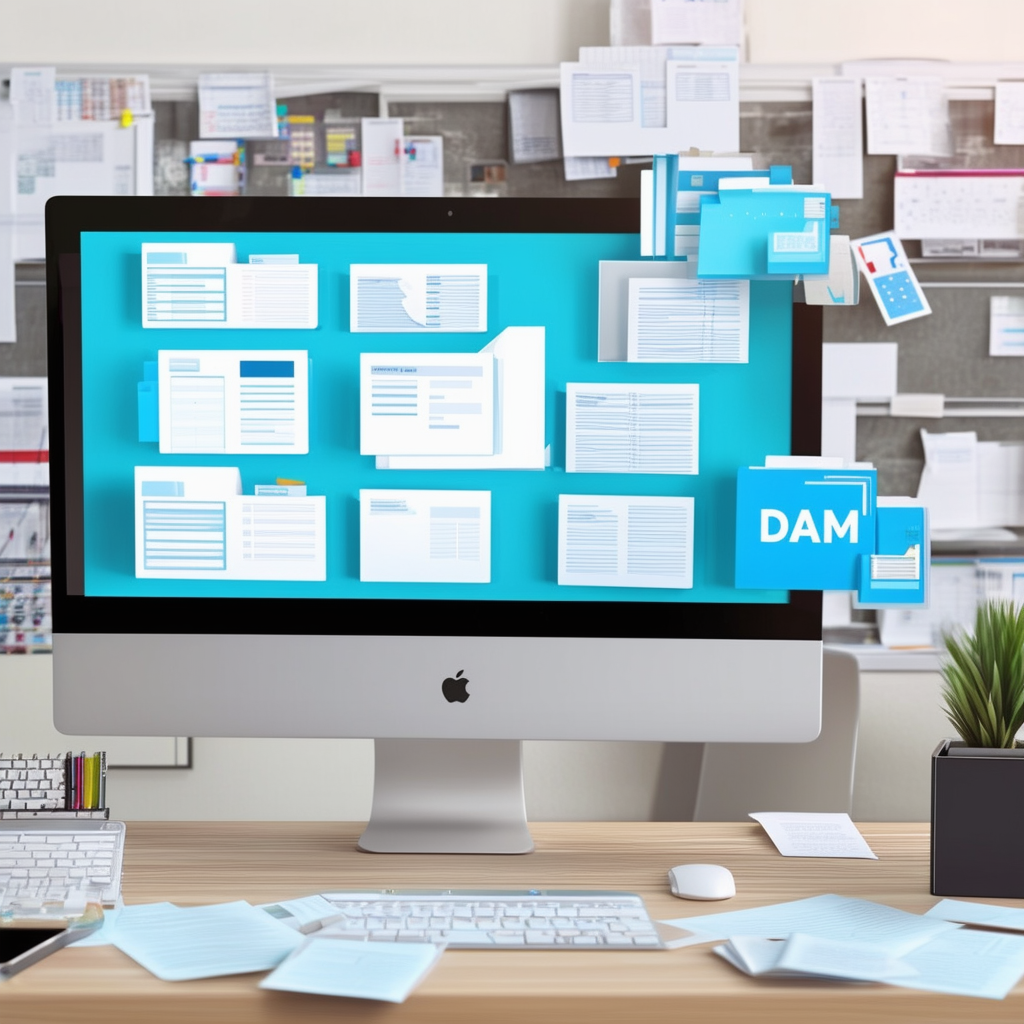Discover how Digital Asset Management (DAM) can revolutionize your business operations by improving...
Maximize Efficiency with Digital Asset Management DAM

Unlock the full potential of your digital assets with an efficient Digital Asset Management (DAM) system.
Understanding Digital Asset Management (DAM)
Digital Asset Management (DAM) refers to the process of organizing, storing, and distributing digital assets in a centralized system. Unlike simple file storage, DAM systems offer robust features for categorizing and tagging assets, making them easily searchable and accessible.
A comprehensive DAM system provides centralization, ensuring a single source of truth for all digital assets. It also includes access control to manage permissions, version control to track changes, and distribution capabilities to streamline the sharing of assets with both internal and external stakeholders.
The Importance of DAM in Modern Business
Implementing a DAM system is crucial for maintaining brand consistency by ensuring all marketing materials adhere to brand guidelines. It saves time and resources by enabling quick access to and repurposing of assets, thereby increasing efficiency.
DAM systems enhance collaboration by facilitating seamless teamwork and asset sharing. They also reduce risks by protecting valuable assets from loss or unauthorized use, ultimately improving return on investment (ROI) by making digital assets easily accessible and reusable.
Essential Features of an Effective DAM System
An effective DAM system should include robust metadata management capabilities for easy tagging, categorization, and retrieval of assets. Version control is essential for tracking changes and managing different versions of assets.
Access control is another critical feature, allowing the definition of user roles and permissions to ensure asset security. Additionally, a good DAM system should offer integrations with other tools in your marketing and creative stack, along with analytics and reporting features to track asset usage and performance.
DAM Applications Across Various Departments and Industries
DAM systems can be applied across various departments and industries. In marketing, they help manage marketing collateral, campaign assets, and brand guidelines. Sales teams benefit from easy access to presentations, brochures, and product images.
Creative teams use DAM systems to streamline workflows and facilitate collaboration on projects. In the e-commerce industry, DAM systems manage product images, videos, and other digital content for online stores, enhancing the overall customer experience.
Steps to Successfully Implement a DAM Solution
To successfully implement a DAM solution, start with assessing your specific needs and challenges. Identify the features that are most important to your organization and evaluate different DAM options based on these criteria, along with budget and scalability.
Once you have chosen the right DAM, develop a roadmap for implementation. This includes setting up the system, migrating assets, training users, and continuously monitoring and optimizing the system to ensure it meets your evolving needs.
Maximizing ROI with Effective DAM Strategies
Maximizing ROI with a DAM system involves strategic planning and execution. Ensure all assets are properly tagged and categorized for easy retrieval. Regularly audit and update the asset library to maintain its relevance and accuracy.
Leverage the analytics and reporting features of your DAM system to track asset performance and usage. This data can inform your content strategy, helping you create more effective and engaging digital assets.
Maximizing Efficiency Through Advanced DAM Techniques
Advanced DAM techniques can significantly enhance efficiency. Utilize automated workflows to streamline repetitive tasks, such as asset tagging and categorization. Implement AI-powered search functionalities to quickly locate specific assets.
Integrate your DAM system with other tools in your marketing and creative stack to create a seamless workflow. This integration can reduce manual work and improve overall productivity, allowing your team to focus on high-value tasks.
Optimizing Asset Workflow with DAM Solutions
Optimizing asset workflow with a DAM system involves creating a structured and organized approach to asset management. Define clear processes for asset creation, approval, and distribution to ensure consistency and efficiency.
Regularly review and refine these processes to adapt to changing business needs and technological advancements. A well-optimized asset workflow can enhance productivity, reduce errors, and improve the quality of your digital assets.
Enhancing Team Collaboration with DAM
DAM systems play a crucial role in enhancing team collaboration. By providing a centralized repository for all digital assets, team members can easily access and share the resources they need, regardless of their location.
Collaboration features, such as commenting, annotations, and approval workflows, facilitate seamless teamwork and communication. This ensures that all stakeholders are aligned and can contribute effectively to the creation and management of digital assets.
Choosing the Right DAM for Your Business Needs
Choosing the right DAM system for your business involves thorough research and evaluation. Consider your specific requirements, such as the types of assets you manage, the size of your team, and your budget constraints.
Evaluate different DAM solutions based on their features, ease of use, scalability, and customer support. Opt for a solution that aligns with your business goals and can adapt to your evolving needs, ensuring long-term success.